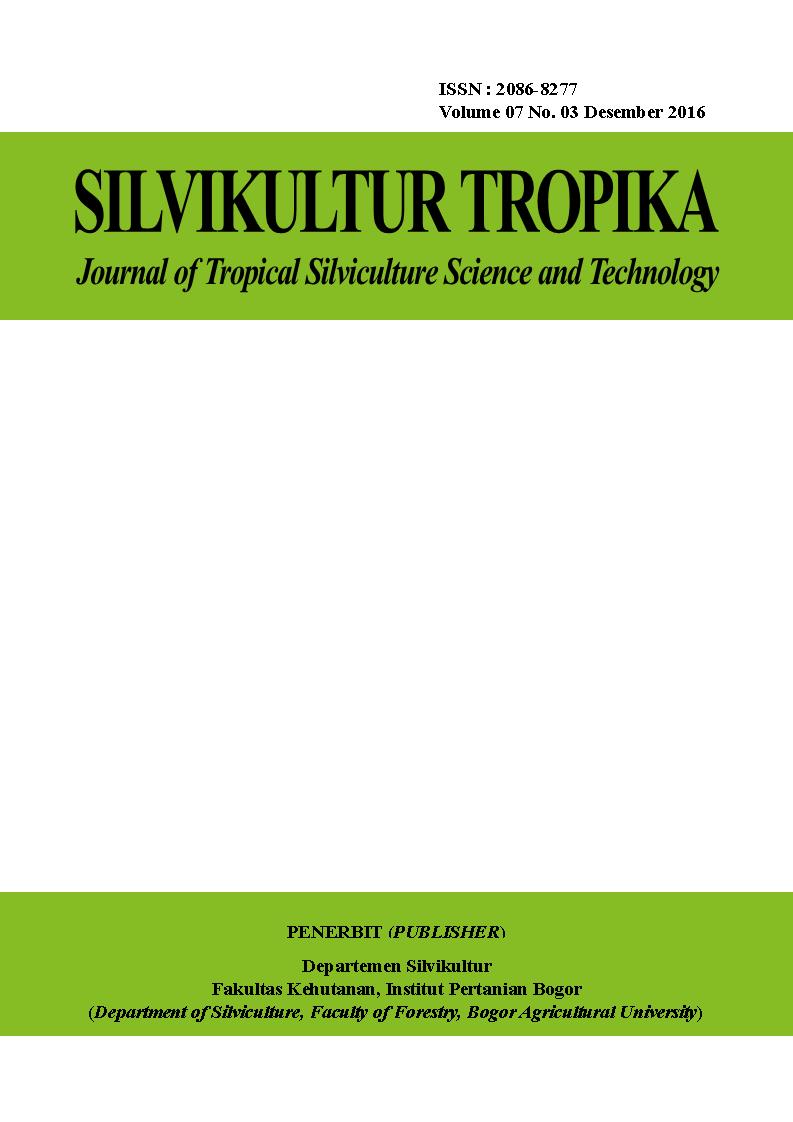Revenue and Land Requirement Minimum In private forest development of Cendana in the Kupang District KONTRIBUSI PENDAPATAN DAN KEBUTUHAN LAHAN MINIMUM DALAM PENGEMBANGAN HUTAN RAKYAT CENDANA DI KABUPATEN KUPANG
Abstract
The high demand for wood, mainly endemic trees such as sandalwood trees, can become a big opportunity in the development plan of the community forests in Kupang. These community sandalwood forests are expected to contribute revenue for the community through the utilization of the land which had not been optimally developed by the community. The study was conducted in Ponain Village and Tesbatan Village I, Amarasi Sub-district, Kupang Regency, East Nusa Tenggara, using multistage sampling. This study aimed to analyze income contribution and the minimum land requirement in the development of the community sandalwood forests in Kupang Regency. The data were collected using interviews and in-depth interviews. The analyses were carried out using descriptive, qualitative and quantitative analyses. The results showed that the largest revenue contribution in the development of community forests in Kupang Regency was from the community sandalwood forests which were combined with secondary crops. In addition, the minimum land requirement in the development plan of the community forests in Kupang Regency was an area of less than half a hectare of land.
Key words: community forests, minimum land, revenue contribution, sandalwood










